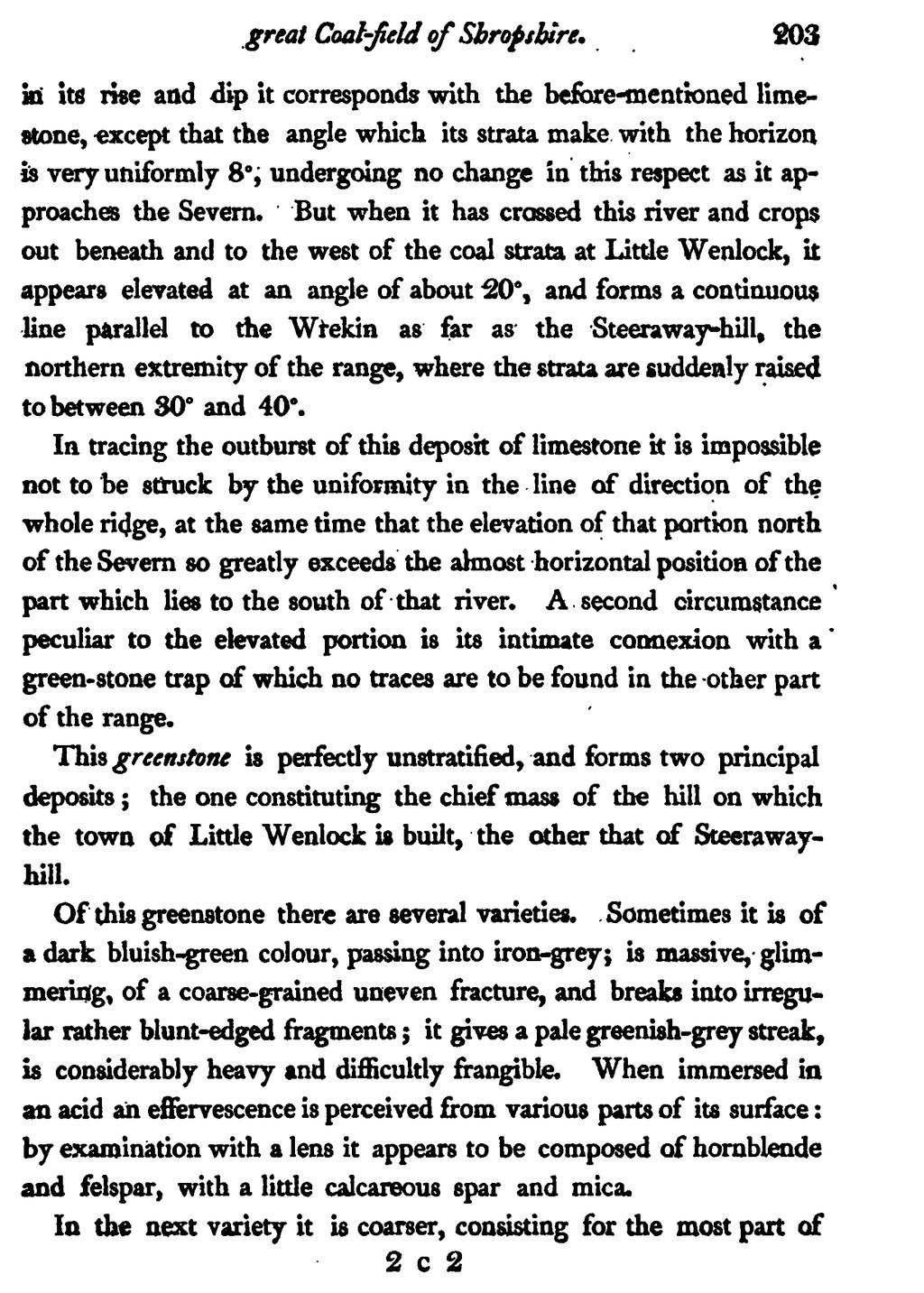in its rise and dip it corresponds with the before-mentioned limestone, except that the angle which its strata make with the horizon is very uniformly 8°, undergoing no change in this respect as it approaches the Severn. But when it has crossed this river and crops out beneath and to the west of the coal strata at Little Wenlock, it appears elevated at an angle of about 20°, and forms a continuous line parallel to the Wrekin as far as the Steeraway-hill, the northern extremity of the range, where the strata are suddenly raised to between 30° and 40°.
In tracing the outburst of this deposit of limestone it is impossible not to be struck by the uniformity in the line of direction of the whole ridge, at the same time that the elevation of that portion north of the Severn so greatly exceeds the almost horizontal position of the part which lies to the south of that river. A second circumstance peculiar to the elevated portion is its intimate connexion with a green-stone trap of which no traces are to be found in the other part of the range.
This greenstone is perfectly unstratified, and forms two principal deposits; the one constituting the chief mass of the hill on which the town of Little Wenlock is built, the other that of Steeraway-hill.
Of this greenstone there are several varieties. Sometimes it is of a dark bluish-green colour, passing into iron-grey; is massive, glimmering, of a coarse-grained uneven fracture, and breaks into irregular rather blunt-edged fragments; it gives a pale greenish-grey streak, is considerably heavy and difficultly frangible. When immersed in an acid an effervescence is perceived from various parts of its surface: by examination with a lens it appears to be composed of hornblende and felspar, with a little calcareous spar and mica.
In the next variety it is coarser, consisting for the most part of
